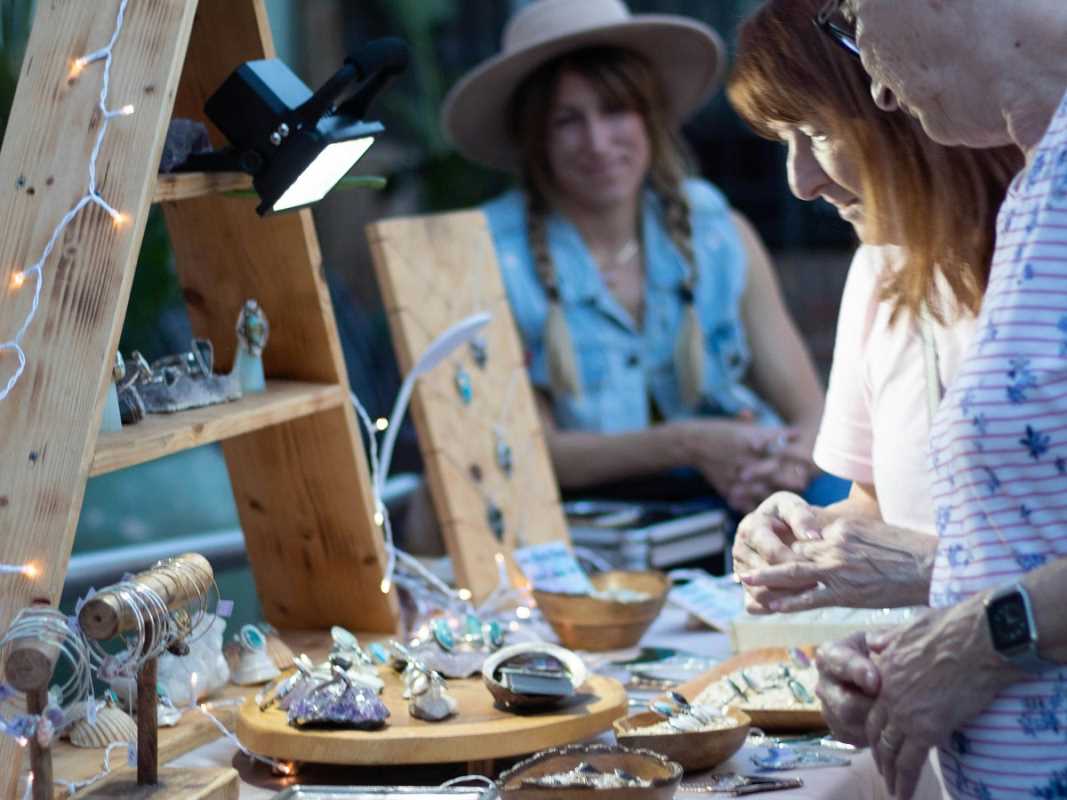Craft fairs and artisan markets are vibrant hubs of creativity and community, offering artisans the chance to showcase their talent while connecting directly with customers. Beyond the immediate sales, these events hold the potential to become a reliable and sustainable source of income when approached with the right strategies. Whether you’re a seasoned vendor or new to the market scene, the road to steady profits lies in planning, presenting, and promoting effectively.
If turning your passion into a thriving business sounds like a dream come true, here’s your guide to making it happen. From choosing the best events to building customer relationships, these tips will help you create a stable income from your craft fair appearances.
1. Choosing the Right Events
Not all craft fairs and artisan markets are created equal. The key to success is selecting events that align with your products and target audience.
Understand Your Niche
First, identify the type of customers who are most likely to be interested in your craft. Are you targeting eco-conscious consumers, luxury buyers, or families looking for affordable handmade goods? Once you’ve defined your audience, research fairs that attract these groups.
Look Beyond Foot Traffic
High attendance numbers are great, but the quality of your audience matters more. Smaller, curated events that cater specifically to your niche often lead to better sales than broad, general markets where your products might get lost in the crowd.
Consider Logistics
Keep event costs in mind, including booth fees, travel, accommodations, and supplies. A higher-entry event might be worth the investment if you stand to reach more buyers, but don’t stretch beyond your budget.
Test and Refine
Try participating in a mix of markets to see what works best for your business. Over time, you’ll identify the events with the best return on investment.
2. Pricing Products Effectively
Setting the right price for your creations increases profitability through customer perception. Strike a balance between valuing your time and materials while remaining accessible to your audience.
Factor in Costs
Make sure your pricing reflects the cost of materials, tools, and booth fees. Don’t forget to account for your time! If you spend hours crafting a single item, your price should reflect that labor.
Research the Market
Attend events as a visitor and observe how similar products are priced. This will help you gauge what customers are willing to pay in a particular setting while ensuring you don’t undervalue your work.
Offer Tiered Pricing
Include products at various price points to cater to a range of buyers. For instance, if you sell high-end ceramics, consider adding a line of smaller, more affordable items like coasters or ornaments. This allows more casual shoppers to support your business without feeling priced out.
3. Creating an Eye-Catching Booth
Your booth is your storefront at a craft fair, and first impressions are everything. An appealing display attracts foot traffic and leaves a lasting impression on potential customers.
Focus on Aesthetics
Use color, lighting, and layout to make your booth inviting and professional. Props like wooden crates, baskets, and vintage signage can add charm, while fairy lights or string lighting create a cozy, eye-catching ambiance.
Maximize Vertical Space
Use shelves, racks, or hanging displays to show off your work effectively without overcrowding your booth. Vertical setups naturally draw the eye and make it easier for customers to browse.
Showcase Your Brand
Use banners or signage that clearly display your business name, logo, and taglines. Consistent branding helps customers remember you long after the event.
Create an Interactive Element
Add features that encourage customers to engage with your booth. Offer samples, set up a display showing your creative process, or showcase a small crafting demonstration.
4. Engaging and Building Relationships with Customers
Craft fairs are more than just events to sell your products; they’re opportunities to build lasting customer relationships and create repeat buyers.
Be Approachable and Enthusiastic
Friendly, genuine conversations are vital to connecting with customers. Be prepared to share the story behind your craft, the materials you use, or what inspires your work. Enthusiasm is contagious, and buyers are more likely to purchase from someone they feel connected to.
Collect Contact Information
Capture customer information to continue the relationship after the fair. Set out a sign-up sheet for an email list or ask customers to follow you on social media. Offering a small incentive, such as a discount code, can encourage them to stay in touch.
Provide Excellent Customer Service
Go the extra mile to make customers feel valued. Package purchases with care, include a handwritten thank-you note, or offer free repairs for certain items. Small gestures build trust and loyalty.
5. Leveraging Social Media for Promotion
Successful craft fair vendors don’t rely solely on foot traffic; they also create buzz around their booths by promoting through social media.
Build Hype Before the Event
Use Instagram, Facebook, or TikTok to announce your participation ahead of time. Share the event details, post photos of products you’ll be bringing, and highlight any exclusive deals or items available only at the fair.
Use Visual Appeal
Social media platforms thrive on visual content, making them perfect for showcasing your creations. Post behind-the-scenes videos of your work process, flat-lay photos of your products, or time-lapse videos of your booth setup.
Engage Your Audience
Ask your followers to share your posts or tag friends who might be interested. Create polls or Q&A sessions about the event to build excitement and include your audience in the conversation.
Don’t Forget Post-Event Follow-Up
After the fair, post content thanking attendees and showcasing highlights from the event. Share photos of your booth, customer purchases, or even testimonials. Encourage those who couldn’t attend to shop online or catch you at the next fair.
6. Diversifying Your Income Stream
While craft fairs can be a fantastic source of income, they shouldn’t be your only source. Diversify your revenue streams to create a stable and sustainable business.
Sell Online
Expand your reach by setting up an online store through platforms like Etsy, Shopify, or your own website. Share the link with craft fair customers so they can shop with you anytime.
Offer Custom Orders
Many customers love personalized items, so consider taking commissions for custom designs. Display signage at your booth that advertises custom work and offer order forms.
Teach Workshops
Share your skills by teaching others how to create their own crafts. Host in-person workshops or start a digital course accessible for followers worldwide.
Explore Collaborations
Partner with other makers or brands for joint products or pop-up events. Collaborations can help you reach new audiences while building strong community ties.
 (Image via
(Image via





